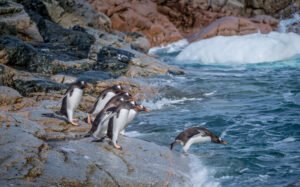Himalaya
Introduction
Travel to Himalaya - Yes!
Tibet is the ancestor of mountains, the source of rivers, the rooftop of the world. There are mountains, ancient templates, and sweet tea. The yaks on the vast pastures of the plateau. A blue water pond in the windswept desert. The golden sunlight on the peak of the snow mountain. It is the place of serenity and sacredness. It lacks oxygen but is full of belief. Keep walking, to the Himalayas, bestow your soul a farthest and the freest journey.
Destinations
Himalaya Destinations
Kula Kangri
—A wonderland in the middle of the Himalayas
Kaamo Tsangpo valley
—An uncharted charming valley
Shishapangma
—Check in! The first row of snow mountain lake view campground
The Most Popular Expeditions
Your Chance to
Discover Himalaya
January 2022
11 days itinerary
$12,000 (per person)
Event details: January 2022, 11 days itinerary. Antarctica express: crossing the circle. Starting from $12,000 (per person).
Antarctica is Waiting
Other Popular Expeditions

Antarctic Express: Crossing the Circle
Starting from $12,000$10,000 CAD (per person)

Antarctic Express: Crossing the Circle
Starting from $12,000$10,000 CAD (per person)

Antarctic Express: Crossing the Circle
Starting from $12,000$10,000 CAD (per person)

Antarctic Express: Crossing the Circle
Starting from $12,000$10,000 CAD (per person)
Special Insights From Our Guest
The biggest adventure you can take is to live the life of your dreams
Lorem ipsum dolor sit amet, consectetuer adipiscing elit. Aenean commodo ligula eget dolor. Aenean massa. Cum sociis natoque penatibus et magnis dis parturient montes, nascetur ridiculus mus.
— Guest
FAQ
Regular Questions
Himalaya locates in the south of the Tibetan Plateau. There are 14 snow mountains above 8000 meters in the world, 10 of them are located in the Himalayas. The most famous is Mount Everest, which is the highest mountain in the world. The Himalayas, with their snow-capped peaks and overflowing glaciers. It is the ancestor of all mountains and the source of all rivers.
The best time to visit the Himalayas is from April to May in spring and from October to November in autumn. Mainly to avoid extreme cold and rainy seasons. During these two periods, the temperature is not too low. And visitors could have sunny days during the trip, which is suitable for hiking and photography activities.
We recommend people aged from 18 to 60 to join the Himalaya trekking tour. Teenagers who are under 18 years old are able to join, but a guardian is required. Himalayas trekking tour is not recommended for children.
Usually, you will hike 4-6 hours per day at high-altitude areas during the Himalayas trekking tour. So you need to be physically fit and have a good mentality. Of course, you don't need to walk all the time, the 4-6 hours include lunchtime and breaks. There are staff to set up the camp and prepare food for you, so you don't need to carry extra weight. People with cardiovascular and cerebrovascular diseases and other diseases unsuitable for entering the plateau cannot sign up for Himalayan trekking tours.
Clothes Preparation: Clothing choice will be based on three keywords: wind resistance, water resistance and warmth. Next, follow the layering guide to prepare your clothing, which provides reliable weather protection and ensures freedom of movement in outdoor activities. The inner layer (base layer) refers to worn next-to-skin clothes, the function is to provide warmth and move moisture away from your skin to keep you dry. Wool and synthetic materials clothes are good choices. Mid-layer: warm layer, down jacket insulation and fleece, are good choices. The more layers you wear, the warmer you'll be. Outer layer: The Outer layer is mainly used for water and wind protection, so a professional Shell jacket is essential. Finally, accessories can be added according to personal habits, such as face masks, gloves, hats and sunglasses.
Gear Preparation: a pair of professional hiking boots. It would be good to have a pair of trekking poles, which can protect your knees. Especially when walking down steep hills.
Sleep system preparation: We will provide you with professional mountain tents, sleeping pads and footprints. All you need to bring is a sleeping bag.
Food will be served by staff. Up to four types of drinks, at least four dishes and one soup are provided for camp meals (dinner) every day. At least three kinds of fruits are available for each meal, and you can have apples every day.
Never Miss Out
Join Maple Explorer Community
Maple Explorer is a company founded in Vancouver in 2015 that focuses on deep travel in the polar regions. We are committed to enabling more people to personally reach the Antarctic, Arctic and Tibetan Plateau to explore the magnificent beauty and cultural features of these unique regions on earth.
Subscribe to our newsletter. You will receive the latest last-minute deals on cruises & polar tours before anybody else!
Maple Explorer was established in Vancouver in 2015 with a focus on providing comprehensive travel experiences in the polar regions. We are dedicated to facilitating greater access to the wonders of the Antarctic, the Arctic, and the Tibetan Plateau, allowing people to discover the stunning beauty and cultural richness of these extraordinary places on our planet.

